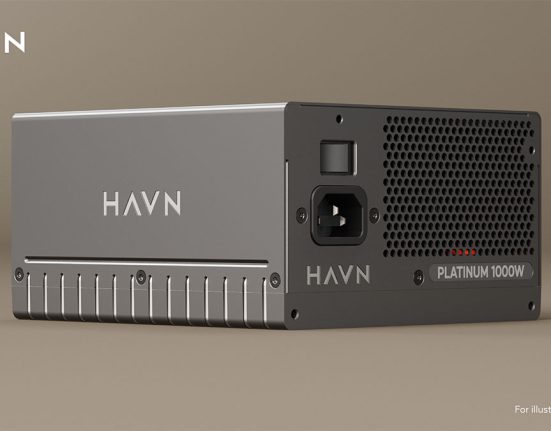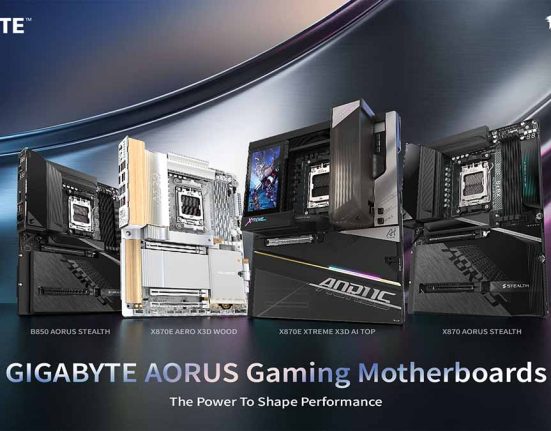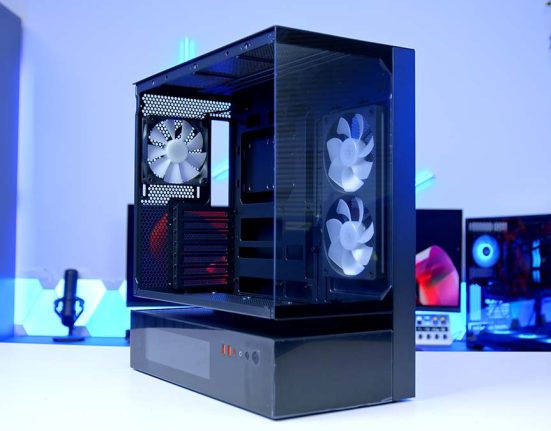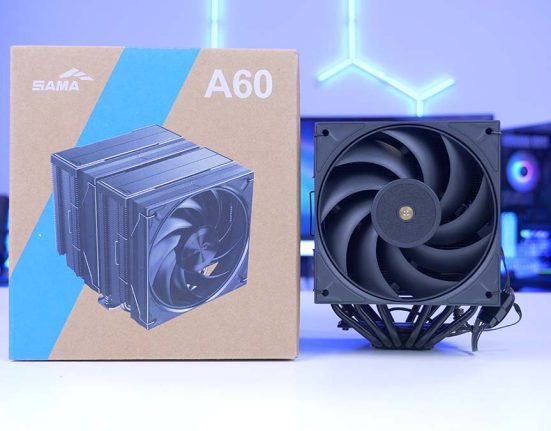Building a Mini-ITX gaming PC is often time-consuming and complicated for the average builder. Small form factor systems (SFF) are generally more complex to work with due to the limited space compared to Mid-Tower and Full Tower cases, making the building process quite advanced when installing all your components. This is where the Cooler Master NCORE 100 MAX comes into play by offering a chassis with a pre-installed CPU cooler and power supply; minimising build hassle. We’ve tested this case rigorously in a gauntlet of GeekaWhat benchmarks to see if the NCORE 100 MAX is a worthwhile pickup for a Mini-ITX PC build.
The Cooler Master NCORE 100 MAX is an innovative Mini-Tower case that prioritises ease of use while ensuring that airflow and thermals aren’t hindered due to its compact and more crowded nature. As one of the only cases on the market with a power supply and custom liquid cooler already installed, we’re curious to see if this makes the building process considerably easier or if there’s an equal amount of hassle due to the case size.


Buy the Cooler Master NCORE 100 MAX on:
Specification
Looking at the specs, the Cooler Master NCORE 100 MAX seems pretty reserved regarding the features on offer. This Mini-Tower case stands at 155m long, with a width of 212mm and a height of 481mm. This chassis is quite tall to accommodate the size increase we’ve seen with modern graphics cards from NVIDIA and AMD, where lengths can reach up to 360mm, depending on the variant.
Despite its size, the NCORE 100 MAX can only house Mini-ITX motherboards, the smallest gaming desktop boards you can buy. The NCORE 100 MAX offers three USB ports on the front IO: two USB 3.2 Gen1 Type-A ports and a single USB 3.2 Gen2x2 Type-C port rated at 20Gbps. The audio jack on the front IO is a 3.5mm combo jack, which is a port for headphones and microphones.
| Key Specs | Cooler Master NCORE 100 MAX |
|---|---|
| Form Factor | Mini-ITX |
| Motherboard Support | Mini-ITX |
| Case Dimensions (L x W x H) | Normal Mode: 155mm x 212mm x 481mm Expansion Mode: 172mm x 212mm x 481mm |
| Front IO | 2 x USB 3.2 Gen1 Type-A 1 x USB 3.2 Gen2x2 Type-C 1 x Audio Combo Jack |
| PCI-E Slots | 3 |
| Colour | Black or Bronze |
| Max Clearance | 48mm CPU Cooler Height 337mm GPU Length (357mm in Expansion Mode) 100mm PSU Clearance |
| Drive Support | Up to 1 x 2.5 inch |
| Fan Support | N/A |
| Radiator Support | N/A |
| Pre-Installed Fans | 1 x 120mm |
| MSRP | $380 |
This case comes with three PCI-E slots, meaning it has space for three and 3.5-slot graphics cards at the maximum, so you should be able to install a large RTX 4090 without any problems. On the clearance front, the most important spec to note here is the space for graphics cards. While CPU cooler height and PSU clearance would be relevant in a more barebones ITX case, the NCORE 100 MAX already has a CPU cooler and PSU installed, so we don’t need to worry about clearance for these components.
In the standard case configuration, the NCORE 100 MAX has 337mm of length for graphics cards, while in the expansion mode, this increases to 357mm, which is helpful for those with particularly large cards. The rest of the specs are relatively standard for a Mini-ITX case. There’s only support for one 2.5-inch drive, but this is to be expected based on the case size. This chassis also comes with a 120mm SickleFlow fan installed at the rear of the case.
One of the more interesting points about this case is the MSRP, which is nearly $400 for the NCORE 100 MAX. This is a lot of money compared to a case like the 2000D RGB Airflow at $199 or the Fractal Design Terra at $179. However, when we remove the cost of the cooler, which has a custom-designed 38mm thick radiator, and remove the 850W ATX 3.0 power supply, the NCORE 100 MAX is very competitive, sitting around the $150 mark.
Cooler Master NCORE 100 MAX Design
Upon taking the NCORE 100 MAX out of the box, you’re greeted by a relatively slim chassis with no tempered glass. The NCORE 100 MAX isn’t the most exciting case, but it has a minimalist design that can easily blend in with a simplistic desk setup. It is also worth noting that the NCORE 100 MAX has two colour options (Bronze and Black), with the Bronze offering a unique variation for those trying to avoid a darker-themed build.

While I’m not personally a fan of the overarching aesthetic, I can certainly understand the appeal for those looking to minimise their case footprint. The NCORE 100 MAX blends in well with a darker setup, and I can imagine this chassis also being well-suited to an office environment.

The NCORE 100 MAX is covered in two anodised aluminium panels that can be easily pulled off the frame to reveal the chassis’s innards. The panelling has plenty of cutouts for airflow and uses a tool-less push-pin design, which makes the inside of the case very easy to access.

Removing the panels will reveal two chambers, which is where all the components will be installed. The primary chamber houses the pre-installed CPU cooler and power supply, while a graphics card will be installed in the secondary chamber.

All in all, the NCORE 100 MAX feels robust and sturdy. The case frame is solid and features minimal protrusions around the internal frame, which is great to see, as any metal sticking out could cause potential installation issues.
Admittedly, there’s not much else to talk about from a design point of view, as the restricted nature of this case limits the amount of exciting design qualities. But despite this, the NCORE 100 MAX is well-constructed and doesn’t hinder airflow or thermal capabilities. The metal panels are highly ventilated and feature a mesh cover, which will minimise any blockages over time.
Building in the Cooler Master NCORE 100 MAX
The main design focus of the Cooler Master NCORE 100 MAX is to provide a much easier and hassle-free way to build a Mini-ITX PC. So, what better way to test this out than with a complete PC build? We assembled a fantastic Mini-ITX system with the NCORE 100 MAX to see if this chassis simplifies the building process.
Internal Space
The amount of internal space available in Mini-ITX cases is an obvious concern for most PC builders because these small form factor cases are generally tight. However, the NCORE 100 MAX doesn’t feel crowded compared to other Mini-ITX and Mini Tower cases we’ve looked at. Because Cooler Master has done all of the work for you with the liquid CPU cooler and power supply, it’s just a case of moving the cables out of the way and installing the motherboard.

The Gigabyte B650I AORUS Ultra sits snugly in the case and is pretty easy to screw down and secure. After getting the board in, we took the opportunity to do any cable management and get everything plugged in because it’s much harder to do once the CPU cooler has been installed. In the accessory box are all of the power supply cables you’ll need, but Cooler Master has pre-installed the 12VHPWR cable, which will save some time for those with an RTX 4000 graphics card.

Getting the graphics card installed was also relatively simple. After plugging in the PCI-E riser cable into the motherboard, it’s a case of spinning the chassis around to the back chamber, removing the PCI-E covers and seating the GPU in place. Admittedly, larger cards like the Palit RTX 4070 Ti JetStream OC we used are more finicky to install, but you can expand the case size to provide more clearance for the graphics card (up to 357mm).
It’s worth highlighting that once your graphics card is installed, all of the IO will be on the bottom of the chassis. Cables can easily be routed, but we understand this design choice won’t appeal to everyone.

The overall amount of internal space is adequate, considering the size of this case. While there’s no additional room for an air CPU cooler or more fans, this case doesn’t need them.
CPU Cooler Mounting
Because of the size limitations of the NCORE 100 MAX, there is no extra room for coolers or fans. For this reason, we’ve decided to talk about the liquid CPU cooler pre-installed in the case. The CPU cooler is a MasterLiquid 120L, but with a considerably larger radiator that sits at a thickness of 38mm. Had Cooler Master used the original ML120L, the thermal capability of this system would be much more limited, but due to the increased thickness, there’s a larger effective area for heat to be dissipated, resulting in solid thermals.

The radiator is top-mounted and can be quickly taken out by removing the four screws and securing it in place. As for mounting, the accessory box that comes with the NCORE 100 MAX features Intel plates for LGA 1700, 1200, and 115X, along with AMD mounting for AM5 and AM4 sockets. We used the AMD mounting for our build, and installing the CPU cooler was an enjoyable experience.
All you need to do for an AMD system is attach the mounting brackets to the CPU blockhead, apply some thermal paste, and then secure the eyelets over the stock cooler hooks and screw them down. This was a straightforward process and will be relatively easy for first-time builders.

Ease of Building
Often, the most challenging part of building in a Mini-ITX case is getting all of the components to fit without significantly hindering thermals or airflow. Because a traditional Mini-ITX build won’t have parts pre-installed beforehand, you have to install everything in a relatively tight space, which can be very difficult if you’re not used to smaller form factor builds.
However, the NCORE 100 MAX is one of the most accessible Mini-ITX cases we’ve built. Pre-mounting the CPU cooler and power supply alleviates a considerable amount of the hassle factor because you don’t have to install these components additionally. Moving the GPU out of the main chamber allows the NCORE 100 MAX to have plenty of clearance for graphics cards, which helps with airflow while accommodating those with larger GPUs.
This build was straightforward to put together, but the only point of contention for us is cable management. There aren’t many places to properly route and hide cables, meaning most of your front panel and power cables will be dangling in the free space left in the chassis. You can clean these up a bit with the included zip ties, but for the most part, your cables won’t be managed as well as they would be in traditional ATX cases.
Features We Like
Expandable Chassis
One of the unique features of the NCORE 100 MAX is that the case is expandable and can be opened up to accommodate larger graphics cards and generally provide more clearance for cables and components. While we imagine most buyers will likely stick to the standard configuration, this feature is a nice value add that caters to a more extensive range of PC builders, which is great to see.
Tool-Less Design
The NCORE 100 MAX prioritises ease of use with tool-less features that simplify the build process. For example, the aluminium panels can easily be removed or placed back on the case without a screwdriver or any screws. The push-pin mechanism that secures the side panels is very strong and provides a hassle-free way of moving them.

Furthermore, the case’s central pillar, which provides structural support, features a latch mechanism that locks it in place. It can also be easily removed to provide more space when installing the motherboard and managing cables.
Features We Don’t Like
Limited Upgrading Room
Contrasting to other Mini-ITX options, the most significant caveat to picking up this case is that you’re somewhat constrained when it comes to upgrading room. There’s no space for additional fans or a stronger cooler. There are also limitations on component configurations based on the wattage of the included power supply (which is 850W). And while it is possible to swap out the V850 SFX for something a bit beefier, this defeats the point of picking up this case in the first place.

For those looking to build a top-end system with high power draw components like the RTX 4090, Core i7 or Core i9 CPU from Intel’s 14th-Gen range, this case won’t be an ideal option to pick up.
Conclusion
Cooler Master NCORE 100 MAX

Product Name: NCORE 100 MAX
Brand: Cooler Master
-
Features
-
Design
-
Versatility
-
Value For Money
Summary
The Cooler Master NCORE 100 MAX is one of the most innovative Mini-ITX cases we’ve reviewed, offering a solid design that prioritises the end-user by simplifying all the build steps. By pre-installing the liquid CPU cooler and power supply, Cooler Master has effectively cut the time to build a PC in half while significantly reducing the hassle factor. The NCORE 100 MAX accommodates modern PC builds by providing plenty of space for large graphics cards, which can be increased by expanding the internal space of the case without the need for additional parts. Furthermore, the NCORE 100 MAX offers solid airflow and thermals thanks to the high-airflow design and custom 38mm thick radiator.
My only qualm about this case is that more powerful upgrades will be somewhat constrained in the future due to the design. You cannot install a new liquid cooler, and upgrading the power supply to a higher-wattage SFX variant somewhat contradicts the design premise. Cooler Master would be better off providing some configuration options with a better liquid cooler or power supply, catering to those building a top-end PC with beefier components. However, I think this is a relatively small weakness of the NCORE 100 MAX, and those looking to build a PC with a smaller footprint should definitely consider picking up this case.
Pros
✅ Easy to build in
✅ Highly innovative design
✅ Competitive price
Cons
❌ Limited upgrading room
❌ Restrictive cable management
❌ Simplistic aesthetic







![FI_[DM82] TT MineCUBE Build](https://geekawhat.com/wp-content/uploads/2025/12/FI_DM82-TT-MineCUBE-Build-551x431.jpg)
